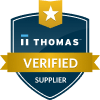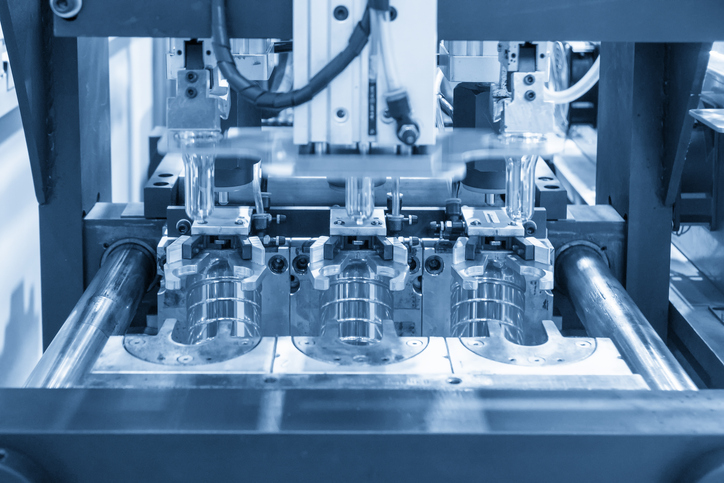Workers in various industries need Personal Protective Equipment (PPE) to stay safe. As safety standards are strict, the need for high-quality PPE is growing. One effective way to produce PPE is through injection molding (a process that combines speed and cost-effectiveness).
In PPE injection molding, manufacturers heat plastic pellets to melt them and inject the liquid into molds to make various PPE parts like masks and goggles. This method helps manufacturers keep up with the growing need for protective gear and maintain good quality. By using advanced injection molding equipment, companies can efficiently produce reliable PPE to meet safety requirements and adapt to new market challenges.
Injection Molding for PPE
Injection molding is a remarkably efficient and adaptable manufacturing process. It involves injecting molten material, typically durable plastic, into a mold to form the desired shape. The mold cools and hardens, creating a finished product that can be used right away or processed further.
How Injection Molding Works for PPE?
In PPE injection molding, molten plastic is injected under high pressure into a precisely designed mold that defines the shape of the final PPE product. With this manufacturers can produce complex designs and fine details in large quantities with minimal waste.
Injection molding produces PPE items – helmets, face shields, and goggles with fine details including ventilation holes and logos. The process can be repeated thousands of times with the same accuracy.
Common PPE Items Produced Using Injection Molding
Several types of PPE are commonly manufactured using injection molding due to the process’s efficiency and ability to handle complex shapes. These items include:
- Helmets: Essential in construction, manufacturing, and other industries, helmets are molded using durable plastics to provide head protection. Injection molding creates a precise fit and consistent strength in every helmet.
- Face Shields and Goggles: Used primarily in the healthcare and industrial field, face shields and goggles need to offer protection and comfort. Injection molding makes clear, shatter-resistant lenses. These lenses fit securely and can be adjusted easily for better comfort and use.
- Respirators and Filters: To make respirators and filtration devices, manufacturers use injection molding equipment to create precise components like facepieces and filter housings.
- Protective Gloves: While gloves are produced using other methods, certain types of gloves, particularly those with rigid components or unique designs can benefit from injection molding for strength and durability.
PPE Injection Molding Equipment
The success of PPE injection molding depends a lot on the equipment used in the process. Specialized PPE injection molding equipment plays a critical role in producing high-quality products. These machines are designed for precision, speed, and efficiency.
Key features of this equipment include:
- Precision Control: Modern injection molding machines have advanced computer controls. These controls help manufacturers adjust settings for pressure, temperature, and injection speed. This keeps the final product’s quality consistent.
- High-Speed Production: Injection molding can quickly produce large quantities of PPE and provide a constant supply for industries that require it.
- Material Handling: The equipment can process various raw materials, such as standard plastics, elastomers, and biodegradable materials so the final product meets the specific needs of the PPE industry.
The versatility of injection molding equipment means that it can accommodate a wide range of PPE products from basic items like gloves to more complex items like protective helmets or face shields.
Benefits of Injection Molding for PPE Production
- High-Volume Production: One of the biggest advantages of injection molding is its ability to produce large volumes of PPE components quickly. This is necessary when many people need PPE, especially during a global health crisis.
- Cost-Effectiveness: Despite the initial setup cost for molding equipment, the per-unit cost of producing items through injection molding decreases significantly with larger quantities. This makes it a highly cost-effective solution for mass production.
- Customization: With custom plastic injection molding, manufacturers can produce PPE according to specific industry standards or requirements. Modifying molds helps create products for different uses or to meet regulatory guidelines.
- Reduced Material Waste: Injection molding is a very efficient process. It reduces material waste and serves more sustainable choice for mass production. Using materials carefully cuts down on the need for extra raw materials and lowers the impact on the environment.
Quality Control in PPE Production
Since PPE protects workers in dangerous environments, it is important to follow strict quality standards. Manufacturers must produce PPE to meet safety rules and be strong enough for every condition.
Regulatory Standards for PPE
PPE must adhere to safety regulations and standards established by organizations like OSHA (Occupational Safety and Health Administration) and ANSI (American National Standards Institute). These standards give guidelines for different types of PPE. They require helmets to meet specific impact resistance tests and face shields to resist fogging and scratching.
Methods of Quality Control
Several methods are employed to maintain the high standards of PPE produced through injection molding:
- Material Testing: Before production, raw materials are strictly tested for properties: strength, flexibility, and chemical resistance. PPE like helmets must be made from materials to resist impact and provide protection.
- Production Monitoring: Quality control teams monitor the production process at various stages. Regular checks show each mold makes items according to the required specifications.
- Automated Inspections: Modern PPE injection molding machines have automated inspection systems that spot imperfections during production. These systems find defects: cracks, air bubbles, and uneven material distribution.
Market Impact of Efficient Production
Efficient PPE injection molding greatly affects the PPE market, especially during periods of high demand. Producing large amounts of high-quality PPE quickly creates better market stability and availability.
Enhanced Availability of PPE
PPE injection molding can increase production fast. This speed is important during a pandemic when the demand for protective gear rises sharply. Manufacturers can increase production and make enough PPE available for distribution.
Cost Reduction
The cost efficiency of injection molding lowers production costs and the price of PPE. As manufacturers can produce large quantities at a lower per-unit cost, consumers and businesses benefit from more affordable protective equipment.
Quick Response to Demand Spikes
Efficient manufacturing processes let companies quickly respond to sudden increases in PPE demand. During emergencies, companies use PPE injection molding equipment to meet the higher demand for protective gear and keep the quality high. This quick action reduces shortages and keeps workers safe.
Conclusion
Using injection molding in the production of protective equipment offers various benefits from large production to cost efficiency. With advanced PPE injection molding equipment, manufacturers can produce high-quality PPE to meet strict safety standards while reducing waste and costs. Efficient production processes guarantee the availability of PPE during high demand, and injection molding is a major factor in the life safety industry. As the demand for reliable, high-quality protective gear increases using advanced injection molding techniques will help meet global needs and improve safety across industries.
With PPE injection molding, manufacturers can simplify production and maintain high safety standards to protect workers.



